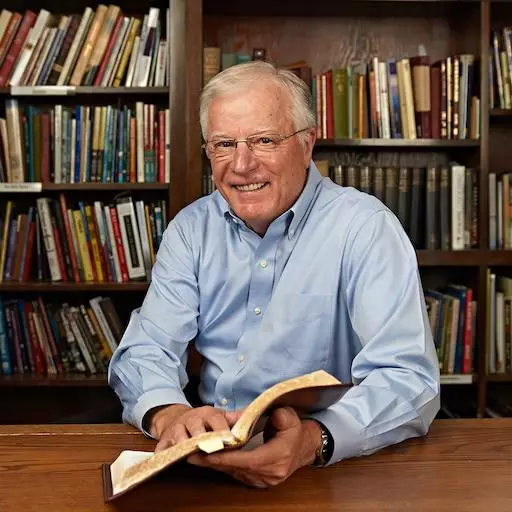Several years ago Pastor Lutzer preached a series of messages on the Carols of Christmas. So, we have asked him to tell us the story of how Silent Night came to be written and how it became the world’s most beloved Christmas carol. Here is his reply:
On Christmas Eve, 1818, in the village of Oberndorf near Salzburg, Joseph Mohr, a 22-year-old clergyman faced the task of telling the congregation in Saint Nicholas church that the organ was broken; and although it could not be repaired by Christmas, he was optimistic that there would nevertheless be music on Christmas day. The rumor was that the mice had eaten through the bellows, and a repairman was not able to fix them immediately.
Franz Gruber, the organist, was despondent over the broken organ, but was encouraged by Joseph Mohr’s hope that there would be music in the church on Christmas day. Both Mohr and Gruber loved music and lightheartedness, so much so that Mohr, an assistant priest at the church, was believed by some to not take his duties as seriously as he should.
On Christmas Eve, Mohr made a pastoral visit to the home of a young woodcutter who celebrated the birth of a newborn baby. That evening on his way home, he began to contemplate the birth of Christ. He walked to the top of a hill, and looked at the town against the background of a starlit evening. Words came to him that he rushed home to record:
“Stille Nacht
Heilige Nacht
Alles schläft
Einsam wacht”
The next morning he hurried over to Gruber’s home and gave him the words as a Christmas gift. “God be praised!” said Gruber. “We have often expressed sorrow that the perfect Christmas hymn had not been written and now we have it.”
“Write the music for it!” Mohr told him. Gruber thought this was impossible with the organ broken, but he was reminded he could use his guitar.
That evening, at their Christmas service, they sang the song as a duet. It was an instant success and when the organ repairman, Karl Mauracher, came in the spring of that year (1819), he asked Gruber to play a song. Of course he chose “Silent Night.”
The repairman was captivated by the song and took a copy with him which helped to spread the song throughout the churches and villages. Later it was used by the Strasser family, a children’s quartet that sang at the Leipzig fair. Twenty-two years after it had been written, it was performed by a choir for King Frederick William IV of Prussia, who ordered it be given first place in all future Christmas concerts within the bounds of his domain.
As for Joseph Mohr, he died of tuberculosis at the age of 46, never knowing that he had given the world its favorite Christmas carol. It was translated into English in 1863 and was used in an English hymnal in 1871. Today is has been translated and sung in 120 different languages.
Why are we so captivated by “Silent Night, Holy Night?” We are intrigued by the fact that Augustus, a Roman Emperor 1,500 miles away, started the train of events that finally led to the birth of Christ in Bethlehem. When he decreed that all people within his empire had to return to their ancestral home for a census, an obscure Galilean couple left Nazareth for Bethlehem. And there Mary gave birth to the Christ child who was Israel’s Messiah.
“Silent Night, Holy Night” captures the wonder of that evening in Bethlehem. The song helps us contemplate the mystery, the simplicity, and the humanity of our Savior. We shall sing it again this Christmas!



